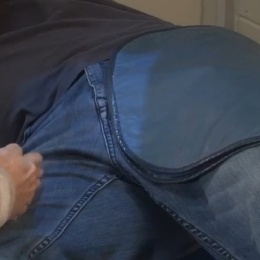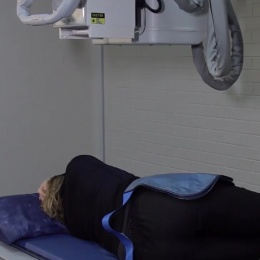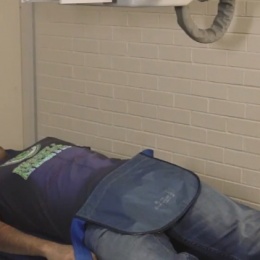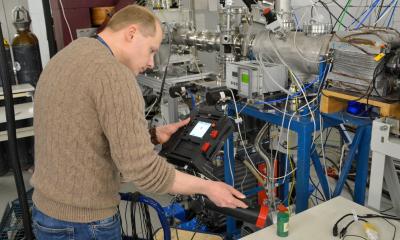Article • Radiology debate
Discussion: the Pros and Cons of contact shielding
Contact shielding is one of the most divisive areas in radiography. Whilst some believe this is essential in protecting patients from radiation, others think the risk has reduced significantly in recent years. The ‘for and against’ shielding in radiography was debated during ‘The Big Debate: Shielding in radiography - an outdated practice?’, a session in the online ISRRT (International Society of Radiographers and Radiological Technologists) congress in Dublin this August.
Report: Mark Nicholls
Before the session, a poll of the online delegates was taken, which asked: ‘Do you believe contact shielding should be routinely used for optimisation?’ Just over 37% of online delegates said ‘yes’, 42.9% ‘no’, and 20% were unsure.
Introducing the speakers, debate chair Louise Rainford said guidance documents on the subject remained vague, while other advice said shielding should be discontinued for routine use. ‘Where does that leave us as radiographers?’ she asked. ‘It leaves us very confused, but this debate is timely. The subject is very important for our profession.’ Stepping forward, Dr Shane Foley, Head of Subject for Radiography at University College Dublin, argued for an end to shielding, whilst Mark McEntee, Professor of Diagnostic Radiography at University College Cork, stated the case for retaining shielding. Both participants drew on their own research and studies on this subject, interpreting findings to back the case for and against.

In opening his case, Foley said the poll result underlined ‘exactly why we are having this debate’. In the decades since the benefits of organ dose reduction were introduced in the 1950s, the typical radiation dose delivered in radiography had dropped significantly, he pointed out. ‘We now have really good equipment, much better education and technology, and the risk has come down, as have the doses we typically deliver.’
The inappropriate location of shielding is among the risks, for example obscuring the anatomy and leading to increased dose, resulting in re-takes, or interfering with automatic exposure control. Using shielding in CT scans can also cause artefacts and noise. ‘In terms of the dose we deliver, and where is it coming from, the vast majority of radiation dose is in the primary X-ray beam and dose from scatter radiation is less than one per cent. Most of the scanner dose is coming from internal scatter within patient, which we cannot protect against.’
The majority of scatter dose is less than 0.1 mSv, Foley said, which presents the need to put this into perspective for patients and in the context of radiation that people are exposed to in everyday environments, such as from air travel or radon gas.
There are benefits and risks with shielding but he suggests radiographers should focus on alternatives, such as collimating the primary beam – he pointed to evidence that by collimating the beam on a radiography lumbar spine, saves the dose patients receive by 48%. Doing nothing on the topic is not an option, Foley warned. With the profession split only sends a message to patients that radiographers cannot agree on the evidence. He also referred to a European consensus document that in general recommends against the use of routine shielding for most exams.
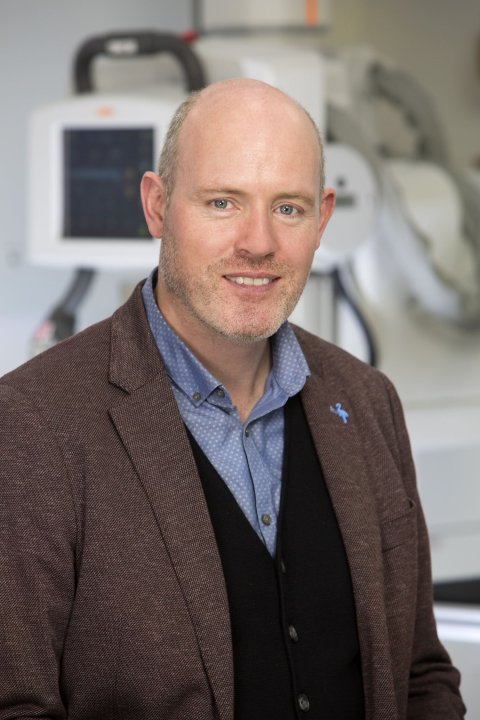
McEntee pointed out that placing a lead shield takes ‘very little effort’ but, because the risk is the patient’s, not the radiographer’s, patients should have a choice in this risk – which is still ‘absent from the guidelines’. ‘While doses may have decreased for clinical examination,’ he added, ‘the number of examinations people are having has increased. In 1996, 149 out of 1000 patients entering hospital had a CT scan, but by 2012 that had tripled and tripled again by 2020. Now, about a third of patients who enter hospital have a CT exam. These examinations are also getting more complex, and common examinations now exceed 50 mSv.’ McEntee also underlined that even low doses are dangerous and not all patients are the same.
Additionally, there are patients who are at increased risk of diagnostic radiology, such as children and the carriers of BRCA1/2 mutations, where radiation can be harmful. During CTA (computed tomography angiography), he added, the breast may receive up to 24.3 milligrays (mGys) of radiation, compared to 4mGys with a mammogram. ‘If we displaced the breast and add lead on top of that, we can reduce dose to the breast by 10 mGys. ‘If I was a patient with that mutation, I would want that protection but we just don’t know who those patients are. Lead shielding, correctly placed outside the field of view and away from the AEC, can help reduce these harms.’
He pointed to ‘hundreds of papers’ that demonstrate that lead shielding can reduce dose to patient. ‘The evidence against using lead shielding is very weak,’ he says. ‘As a profession we need to carry out our own randomised controlled trials and do our own systematic reviews. Shielding in radiography is not outdated. If it is used outside of the field, it reduces dose and it protects patients.’
At the end of the debate, the poll was repeated and indicated a shift in position on contact shielding among online delegates with 47.2% believing ‘shielding should be routinely used for optimisation’, while 34.8% said not, and 18% remained unsure. What clearly emerged was the value of debating the subject, the need for further detailed research, and the importance of involving patients in the process of whether contact shielding should continue or be phased out.
Profiles:
Mark McEntee is Professor of Diagnostic Radiography at University College Cork and a recognised leader in clinical translation of medical imaging optimisation and radiological perception. With more than 200 original papers in radiological journals, his publications explore novel technologies and techniques that enhance the detection of clinical indicators of disease, whilst minimising risk to the patient.
Shane Foley is Associate Professor and Head of Subject for Radiography at University College Dublin, a past-President of the Irish Institute of Radiography and Radiation Therapy, and a current Executive Board member of the European Federation of Radiographer Societies (EFRS). He is currently on the EuroSafe Imaging Paediatric working group and was the EFRS representative on the European consensus statement on contact shielding.
02.09.2021



